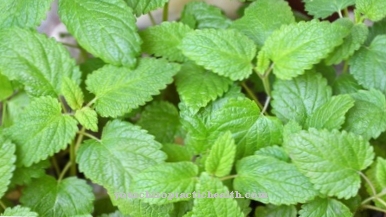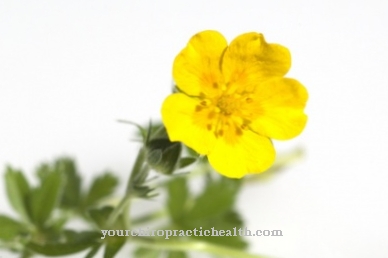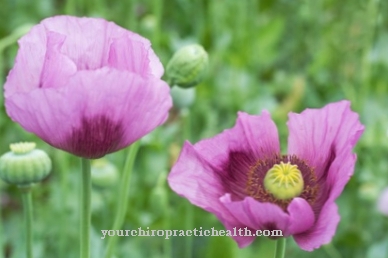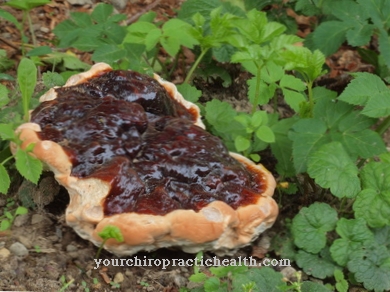Of the Real star anise belongs to the star anise family. It thrives in tropical regions and its fruits are used as a spice but also for digestive problems and respiratory diseases.
Occurrence and cultivation of real star anise

Of the Real star anise is an evergreen tree that can grow up to 20 meters tall. The leaves are relatively pointed and inverted ovoid, the flowers are deep red. The shell of the flower consists of up to twelve leaves, the plant also has eleven to twenty stamens and eight or nine carpels.
The fruit of the star anise is reddish-brown and has a diameter of about 3.5 cm. Star anise prefers sunny to partially shaded places or acidic, sandy soils and is collected in October. He is also under the synonym China anise or Badian known. The spice came to Europe in 1588 when the navigator Sir Thomas Cavendish brought the star anise with him from the Philippines. The plant was first mentioned in 1726 in the pharmacist's tax of the Principality of Anhalt-Zerbst.
Today, in the food industry and in the pharmaceutical industry, star anise oil replaces the very expensive real anise oil, which is used as an additive for liqueurs, confectionery, toothpastes or various pharmaceutical preparations. Star anise is also used for tea blends, which are then used to prepare mulled wine. If you want to plant star anise yourself, let the seeds soak in a damp cloth for a night.
Then you put them in sandy soil, where they germinate best between 22 and 27 degrees. A bright, warm room, a winter garden or a greenhouse is suitable for cultivation. High humidity is also important, so the plant should be sprayed often. At first, however, you can only enjoy the plant itself, as the fruits take 15 years to form.
Effect & application
Together with Szechuan pepper, clove, cassia cinnamon and fennel, real star anise is used as a five-spice powder in Chinese cuisine. In addition, the plant is often a component of Indian curries, respectively. Peking duck and is also used in the kitchen for fish and seafood, for baked goods and desserts with chestnuts, pears or figs, for Christmas cookies as well as for chutneys, jams and compotes.
Star anise is also needed to make a broth called lu-shui. A star anise oil can easily be made by yourself for the aromatic kitchen. To do this, you fill a screw jar with star anise and a vegetable oil and then let it stand for about fourteen days. This can then be used to refine winter baked goods.
The shell of the star anise is very aromatic, so it is also ground and used. The spice can be stored in a closed container for up to three years. Real star anise has a licorice-like, sweet but also a slightly peppery taste. The plant is also used medicinally, whereby the dried collective fruits are used here. These contain essential oil with active ingredients such as foeniculin, methylchavicol, anisaldehyde, linalool, pinene, limonene and flavonoids.
Like anise, star anise also has antispasmodic and expectorant properties and is used for respiratory catarrh, gas, bloating and mild cramps. Studies have also shown that star anise also has analgesic, antioxidant and antimicrobial effects. Therefore, the plant is also used for lumbago, sciatic pain, tonsillitis and nerve pain, as well as bad breath and toothache.
The antimicrobial properties are mainly due to the anethole present in the plant, which is effective against fungal strains, yeasts and bacteria. It also supplies what is known as shikimic acid, which is used in the manufacture of the flu remedy Tamiflu. A.
In addition, star anise also has an anti-allergic and anti-inflammatory effect and is therefore also used for skin diseases. In addition, real star anise is also used to make anise oil, which can be found in numerous cough suppressants.
Importance for health, treatment & prevention
Star anise is mainly used as a spice and in this way it can help with gas and indigestion. The seeds can also be used to make tea, which has a stimulating effect on digestion and is used for respiratory diseases. For the tea, a teaspoon of the freshly crushed seed is poured over 150ml of hot water.
The mixture has to steep for about 15 minutes before straining. The essential oil should never be taken undiluted, as even a small amount can lead to seizures, nausea, vomiting or pulmonary edema. The real star anise must not be confused with the Japanese star anise. This is similar to real star anise in terms of smell and appearance, but is poisonous and can cause bladder, kidney or liver damage.
A tea made from star anise also helps with bad breath, as the polyphenols contained in the tea inhibit bacterial growth in the throat or mouth. Star anise is particularly popular as a medicine in Asia, where it is mainly known and loved in traditional Chinese medicine and Ayurveda.
In traditional Chinese medicine, star anise is used to regulate the flow of qi and relieve pain. Infant colic can also be treated with star anise. To do this, rub the star anise oil warmed up clockwise with your hand in gentle movements on the baby's stomach, taking the navel as the focus.



























